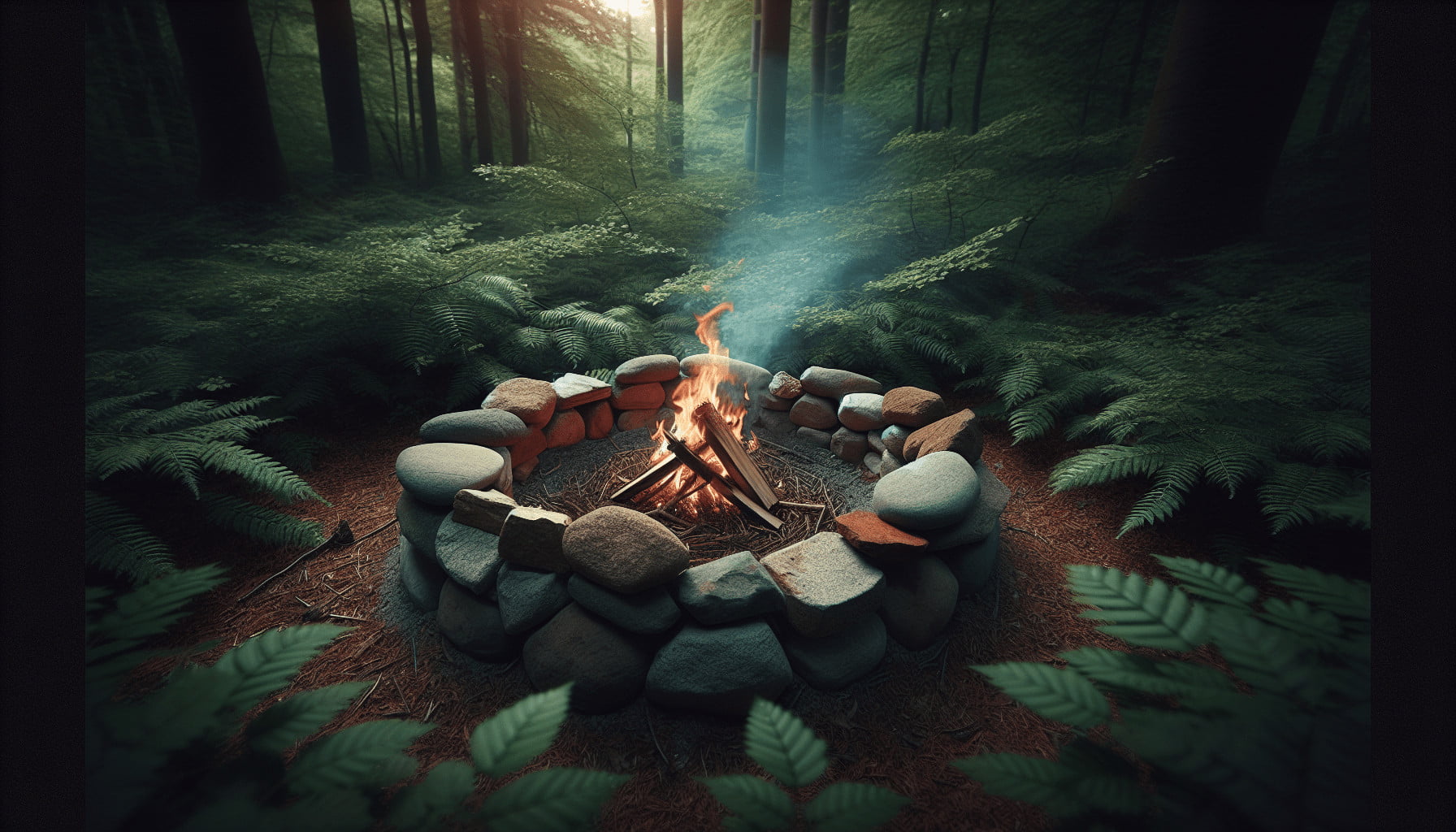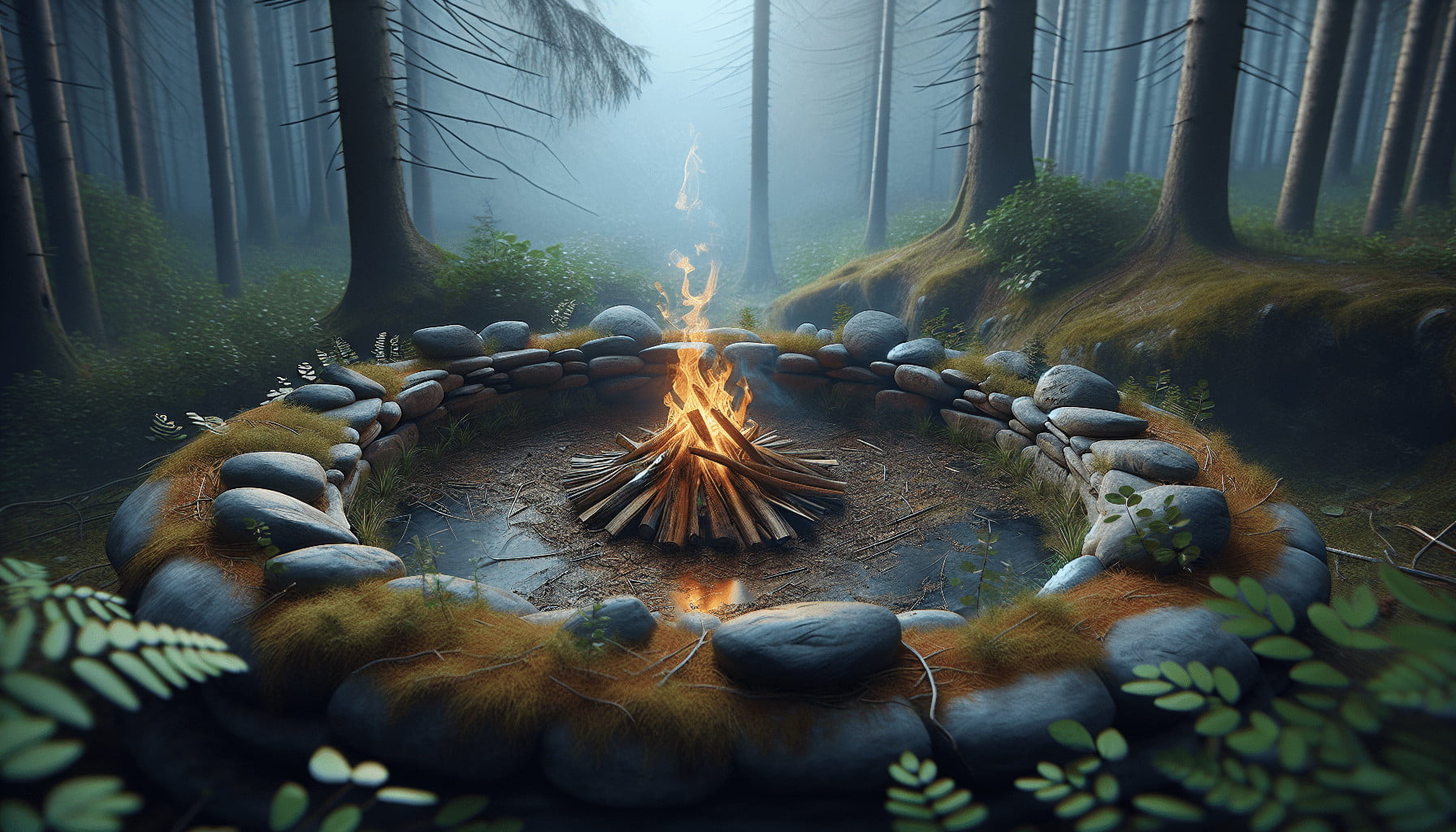Discover the art of concealed cooking in the wild with a smokeless fire that will keep your location under the radar and your campfire adventures discreet. In “How To Build A Smokeless Fire For Concealed Cooking In The Wild,” you’ll learn the essential techniques and materials needed to create a fire that emits minimal smoke, perfect for hidden cooking and ensuring your presence remains unnoticed. Whether you’re a seasoned camper or a curious beginner, this guide will help you master the skill of building an efficient, low-impact fire, enhancing your wilderness experience while keeping you connected to nature in a sustainable way.
Building a smokeless fire not only ensures your meal is cooked but also keeps your location concealed, providing both warmth and security. Let’s dive into the steps and tips to master the art of creating a smokeless fire in the wild.

Why Go Smokeless?
Understanding the importance of smokeless fires is the first step to mastering this skill. Smoke can signal your location, attract wildlife, or even alert nearby humans to your presence. Whether you’re in a survival situation, a tactical scenario, or simply enjoying some solitude, keeping your fire smokeless helps you remain undetected.
Benefits of a Smokeless Fire
- Stealth: By avoiding smoke, you keep your presence hidden – crucial for both security and privacy.
- Efficiency: Smokeless fires burn hotter and more efficiently, making cooking quicker and conserving fuel.
- Environment: A cleaner burn reduces the risk of wildfires and lessens your impact on the environment.
Essentials for Building a Smokeless Fire
Before diving into the techniques, let’s make sure you have the right materials and understand some key concepts.
Key Materials
Here are the basic elements you’ll need:
| Material | Description |
|---|---|
| Firestarter | Items like flint and steel, a fire starter stick, or even a lighter |
| Dry Tinder | Fine, dry materials that catch fire easily, such as dried grass or birch bark |
| Kindling | Small sticks and twigs that will catch fire from the tinder |
| Fuelwood | Larger logs to keep the fire going once it’s started |
| Digging Tool | A small shovel or sturdy stick for digging a fire pit |
Understanding Fire Physics
Creating a smokeless fire also involves understanding how fires burn. Fires need three elements: heat, fuel, and oxygen, commonly referred to as the “fire triangle.” Manipulating these elements allows you to control the smoke production.
Choosing the Right Location
Location plays a pivotal role in building any fire, particularly a smokeless one. Select a spot that’s shielded from the wind, but also has some ventilation to allow for efficient burning.
Step-by-Step Guide to Building a Smokeless Fire
Follow these detailed steps to create a smokeless fire perfect for concealed cooking.
Step 1: Clearing and Preparing Your Area
Start by selecting an appropriate site and clearing it of debris to minimize fire hazards. Remove leaves, twigs, and any flammable materials around your selected spot. You want to create a safe area where your fire can burn with minimal risk.
Step 2: Digging a Dakota Fire Hole
The Dakota Fire Hole is an excellent method for creating a smokeless fire. This technique involves digging two holes – one for the fire and the other for air intake – connected by a tunnel underground.
- Dig the Main Hole: Dig a cylindrical hole about 12-16 inches in diameter and 12 inches deep.
- Dig the Air Hole: About 6-10 inches away from the main hole, dig a second smaller hole to the same depth.
- Connect the Holes: Dig a tunnel about 6 inches in diameter to connect the base of the two holes. This will draw air in and promote combustion.
Step 3: Preparing and Assembling Your Fire Materials
The key to a smokeless fire lies in how you prepare your materials:
- Tinder: Place a small bundle of fine, dry tinder at the base of the Dakota Fire Hole. Ensure it’s compact but has enough airflow to ignite easily.
- Kindling: Arrange small sticks and twigs over the tinder in a teepee or grid pattern. Leave enough space for airflow to foster efficient burning.
- Fuelwood: Once your kindling is burning well, add larger pieces of wood slowly. Avoid piling too much at once to keep the fire smoldering.
Step 4: Igniting the Fire
Use your chosen fire starter to ignite the tinder. Blow gently to nurture the flame and help it spread to the kindling. The design of the Dakota Fire Hole should draw air through the side tunnel, aiding in the combustion process and reducing smoke.
Step 5: Maintaining a Smokeless Fire
Maintain your fire by gradually adding fuelwood in small amounts. Ensure you use dry wood, as wet wood produces more smoke. Manage the air intake by adjusting the size of the tunnel if necessary to keep the fire burning efficiently.
Techniques to Reduce Smoke
There are several strategies beyond the Dakota Fire Hole to ensure your fire remains smokeless.
Use Dry Wood
Wet or green wood produces more smoke. Whenever possible, use dry, seasoned wood. You can often find these in the form of dead branches still attached to trees, as they tend to be drier than wood found on the ground.
Control the Airflow
Proper airflow reduces incomplete combustion, which is the main cause of smoke. Ensure your fire pit or set-up allows for sufficient ventilation. If building a fire without a Dakota Fire Hole, construct a windbreak but leave openings for airflow.
Use Smaller, Thinner Wood
Smaller pieces of wood burn more completely, reducing the likelihood of smoke. Thicker logs and larger branches should be added only once you’ve achieved a hot, steady flame.
Build a Reflector
A reflector helps direct heat back into the fire, aiding in a more complete burn. You can create a reflector using larger logs placed around the fire or by constructing a small wall of stones behind it.

Cooking with a Smokeless Fire
Now that you’ve got your fire going, it’s time to cook. The key is to efficiently use the heat without producing excess smoke.
Cooking Techniques
- Direct Roasting: Skewer your food on sticks and hold them over the flame.
- Using a Grill: Place a portable grill over the pit for a more conventional cooking method.
- Boiling: Use a sturdy metal container to boil water or cook stews directly over the flame.
Optimizing the Cooking Process
- Keep It Simple: The fewer dishes you attempt at once, the less likely you are to produce smoke.
- Pre-Preparation: Pre-cut your ingredients to reduce cooking time and thus fuel consumption.
- Monitor Constantly: Keep a close eye on your fire and food to quickly adjust flames and prevent smoke.
Safety Tips and Considerations
Keeping safety at the forefront is crucial when building any fire. Here are a few considerations to keep in mind:
General Safety
- Never leave your fire unattended. Always have a way to extinguish it quickly, such as water or sand.
- Check for local fire regulations to ensure you are allowed to build a fire in your selected area.
- Have a perimeter around your fire pit that is free of flammable materials.
Wildlife Awareness
Fire can attract wildlife. It’s essential to cook food away from your sleeping area and store food securely afterward.
Environmental Respect
Respect the environment by minimizing your impact. Use a Leave No Trace approach by completely extinguishing your fire and burying any evidence.
Advanced Tips for Concealed Cooking
For those who want to take their concealed cooking to the next level, here are some advanced tips:
Utilizing Natural Barriers
Using natural barriers like rocks, trees, and hills to shield your fire enhances concealment. These can act as natural windbreaks and reflectors to improve your fire’s efficiency.
Covering Your Tracks
Once you’ve finished, make sure to cover your tracks. Scatter any leftover ashes, and replace any displaced soil and vegetation to leaving the area as you found it.
Thermal Concealment
If you’re concerned about thermal detection (using infrared technology), concealing your fire’s heat signature can be done by further insulating your fire or using a below-ground method like the Dakota Fire Hole.
Troubleshooting Common Issues
Even with the best preparation, things can go wrong. Here are some common issues and how to troubleshoot them:
Excessive Smoke
If your fire produces too much smoke:
- Dry Your Wood: Ensure your wood is as dry as possible.
- Control Airflow: Adjust the ventilation. Too little air causes smoldering.
- Avoid Resinous Wood: Pine and other resinous woods produce more smoke.
Difficulty Igniting
If you’re struggling to start your fire:
- Check Your Tinder: Make sure it’s dry and finely textured.
- Build it Right: Reconstruct your setup to ensure proper airflow.
- Use a Firestarter: Sometimes natural methods need a little help from a manufactured firestarter.
Keeping the Fire Going
If your fire won’t sustain:
- Add Fuel Gradually: Don’t overload the fire, ease it with gradually larger pieces.
- Maintain Airflow: Ensure air can flow freely through the fire.
Practice and Patience
Building a smokeless fire isn’t typically a perfect one-shot deal. It takes practice and patience. Every environment provides different challenges and opportunities. Use every outdoor adventure as a chance to refine your skills and adapt to new conditions and scenarios.
Final Thoughts
Mastering the art of building a smokeless fire for concealed cooking in the wild is not just about technical know-how. It’s about understanding your environment, respecting nature, and practicing skills until they become second nature. Whether you’re preparing for a survival situation or simply enjoying a quiet meal by a hidden fire, the techniques outlined will serve you well.
Meta Description
“Learn how to build a smokeless fire for concealed cooking in the wild with these step-by-step instructions and expert tips for outdoor enthusiasts.”
With practice, patience, and the right techniques, you can ensure a successful, smokeless fire every time you venture into the wild. Happy camping and safe cooking!
